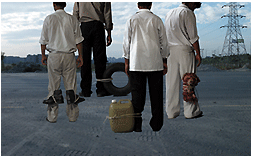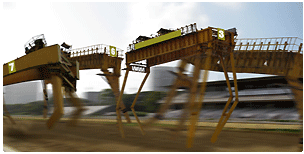- Prelude
- Guest Editor’s Column
- Hard Talk
- Digital Art
- The Write Stuff
- The Art of the Shakers : Shaker Furniture
- New Media
- In the News
- GenNext
- Report
- Artist Index and Statistics
- Market Insight
- Auction Reports
- The month that was
- Mumbai Artsighting
- Musings from Chennai
- Delhi Dias
- Deccan Odyssey
- Art Bengaluru
- In between – from Vadodara
- North-East Opsis
- A Tryst with Art in Madhya Pradesh
- Strands of Social Semiotics
- Transcending Popular
- Art of the Land & Land in Art (part I)
- Through The Patina
- Earth
- Go See India
- Dali's Elephant
- Malleable Memory
- Creative Impulse
- Different hues of Aakriti
- Bonhams : Fine Writing Instruments New York
ART news & views
Digital Art
Volume: 2 Issue No: 7 Month: 8 Year: 2010
Directions from the New Media
The tendency to move away from received wisdom, in all spheres of life, especially in the practice of art, has been operant for generations. The stamp of a truly creative mind is the constant pursuit for newer modes of expression guided forth by an indomitable, indefatigable spirit. To search, to research, to experiment, and to constantly challenge traditionally delineated limits-have forever been the unmistakable markers of an inventive genius. “Art”, as Wittgenstein therefore surmised, “is a concept with open boundaries.”
 |
Today the acceptance and appreciation for digital art has reached an altogether different level of high, and Indian artists are marching ahead with innovative and thought-provoking works of art with an amazing range of messages and meanings, some in-your-face, and some waiting to be decoded and deconstructed.
 |
None of these artists, however, work exclusively on the digital medium, and refuse to be slotted in any one particular bracket. Even then, the digital medium holds special place for them. Why, one may wonder. As expressed by Chhatrapati Dutta, “Every medium has its limitations, as well as immense possibilities. My practice has always revolved around finding extensions to these possibilities, and bringing several media together, but always retaining 'content' as its fulcrum. Though medium does not directly feature in the debate between 'form' and 'content', it is most often than not - resolved through the medium.”
 |
It is a fairly common practice to use photographs as the base, the starting point for many of these digital works, which are then subsequently altered or doctored to create an entirely new image. Staged or performance photography is doubly intriguing because it offers, “the possibility” says Dutta, “of obliterating time and space and facilitates interpolations, which in turn creates ambiguities as well as multiple interpretations, something I seek in performance-photo-works.” With newer, state-of-the-art software and devices that enable to create or distort an image to the heart's content, allowing for unbelievable concoctions, the digital medium is slowly, but surely catching on with those who do not shy of rustling up stunningly imaginative fare! Further, the trajectory of the humble camera to its present-day, easily-accessible avatar, has taken away from it the 'aura' of exclusivity, making an artist, or atleast a wannabe, of a layman. It has, without a shade of doubt, blurred the distance between artist and viewer, and has infact, loosened the very rigidity of the term 'artist'. “Anyone who can 'click' sensibly can be an artist”, opines Scaria.
 |
Sometimes the language of such critique or commentary is more tacit, and tends to, as it does with Dutta's works, “investigate/cut-through the social dynamics that a given political situation presents.”
The increasing popularity of digital art owes much to the changing attitudes of art galleries, who are far more open to, and enthusiastic about these novel modes and methods, hence providing the much needed moral (and material) fillip to the furtherance and continued exploration of works in this medium. It creates the promise of a present and future that is pregnant with the possibilities of a far more egalitarian, involved and democratic art-form; something that should alleviate as much as showcase contemporary issues that range from terrorism to gender discrimination to those of corporatization and the erosion of human qualities.
- Paroma Maiti